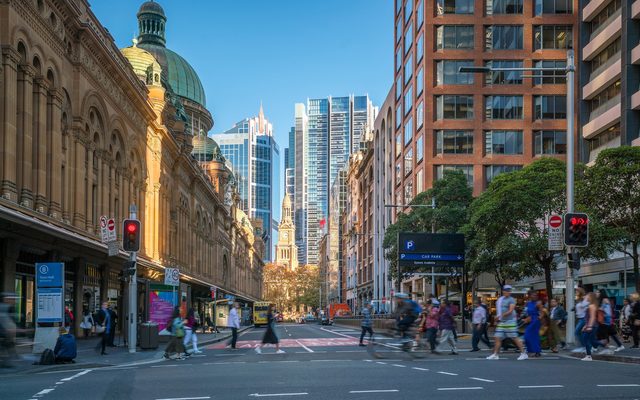This article is from the Australian Property Journal archive
AUSTRALIANS are planning to slash their spending by almost 20% this holiday season, with the cost-of-living crisis forcing retailers to scramble and find ways to offer more value – but more retailers are expecting an uplift in consumer confidence and sales growth on the other side.
Deloitte’s latest annual Retail Holiday Report found that just 51% of retailers expect sales growth – down from 57% in 2023 and 67% in 2022.
Forty per cent believe consumers won’t pay full price.
However, 41% of retailers now anticipate an improvement in consumer confidence over the next 12 months, up from just 10% in 2023.
Retailers have had to deal with real retail turnover per capita not growing since mid-2022, and consumers are planning to spend nearly 19% less on average this year, at $1,002 each.
“The last 12 months have brought little joy for our retailers, as inflation, interest rate rises and weak demand have weighed on economic growth,” Deloitte consumer products and retail sector leader, Elise Sharpley said.
“Cost of living pressures and the associated belt tightening are driving consumer spending intentions and actions, and this is set to continue into the 2024 holiday retail season.
“Against this backdrop, consumers are changing the way they shop, how much they purchase and the type of products they buy, so we’re looking at a more frugal holiday period ahead.”
For the first time, Deloitte surveyed 1,000 consumers as part of the report research. Of those, 76% are cutting back on spending overall, but 67% are still looking to make small splurges.
Just under half expect to buy fewer goods and services. Nearly all – 95% – are seeking the best deals as their first priority, and about one-third would walk away without some sort of discount.
Deloitte retail, wholesale and distribution partner, Damien Cork, said that as a result, “discounting wars will intensify as retailers understand consumers won’t pay full price, and many consumers tell us they will walk away if a discount isn’t on offer.
“Retailers are adapting by lowering prices, as well as focusing on affordable and value-driven products, creating better in-store experiences, and embracing innovation to attract new customers.”
The growing influence of US trends on Australian sales campaigns has seen the November flash sales events of Click Frenzy, Black Friday and Cyber Monday all become marquee events on the retail calendar. Cork retailers “should keep some powder dry” for the traditional busy season from early December up to Christmas and Boxing Day, which will remain the dominant sales period.
Nearly one in five buyer favour promotions.
Meanwhile, consumers are continuing to flock to in-store experiences. Social and search constitute the first step of 58% of customer journeys, but sales transactions through online channels are likely to decline these holidays.
“To make the most of this dynamic, retailers must firmly on integrating digital and in-store experiences so their customers can shop when, where and how they please,” the report said.
“Close to 90% of consumers also consider trust a key factor in their purchasing decisions, so making fair and transparent pricing and delivering great service are important considerations for retailers.”
Sharpley said that following Christmas and into the new year, the road ahead for Australia’s retail industry “may be challenging, and household budgets will remain stretched for now”.
“But with more than 40% of retailers anticipating an improvement in consumer confidence over the next 12 months, there is a strong case to make that brighter days lie ahead.
More than half of retailers expect growth in sales over the next 12 months, and some even anticipate a double-digit rise.
The share of retailers anticipating a decline in consumer confidence has also plummeted – from 61% to 26% – indicating “we may currently be at the bottom of the business cycle”.
That bodes well for retail landlords. The retail sector is expected to lead the recovery in property values, according to Cushman & Wakefield, after likely seeing an 11% drop-off in values from peak-to-trough by early 2025.
The firm is forecasting a 16% upward repricing from the end of 2024 and 2030. Investment volumes in the June quarter totalled $1.4 billion, and are expected to grow to $2.9 billion each quarter by the end of next year, with more key deals already starting to trickle through.




